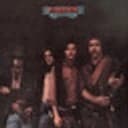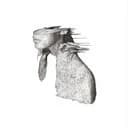Understanding the E Mixolydian Mode
The E Mixolydian scale follows the interval pattern 2-2-1-2-2-1-2 (whole-whole-half-whole-whole-half-whole), producing the notes E, F♯, G♯, A, B, C♯, D, E. As the fifth mode of A Major, it begins on the dominant (fifth) degree of that parent scale. The defining characteristic is the natural seventh (D), which would be D♯ in E Major, creating the signature Mixolydian sound. This single alteration—lowering the seventh by a half step—transforms the resolved quality of a major scale into an open, ambiguous modal sound that sustains tension indefinitely. The scale naturally contains an E7 chord (E-G♯-B-D), which forms the foundation of its dominant character and explains its ubiquity in blues and rock music.
Why Mixolydian Dominates Rock and Blues
The E Mixolydian scale's dominance in rock and blues stems from both its sonic qualities and its practical advantages for guitarists. The scale's built-in dominant seventh quality creates perpetual tension that never fully resolves, perfect for sustaining grooves and building energy without traditional harmonic resolution. On guitar, E is a particularly resonant key that takes advantage of open strings, making Mixolydian riffs and licks feel natural and powerful under the fingers. This combination of sonic character and physical playability explains why countless blues standards and rock anthems are built around E Mixolydian. The scale's major third (G♯) provides brightness while the flattened seventh (D) adds bluesy grit—a perfect balance that's simultaneously uplifting and edgy, epitomizing the rock and blues aesthetic.
Chord Progressions and Practical Applications
The characteristic E Mixolydian progression is I-♭VII (E major to D major), which immediately establishes the modal sound and appears in countless rock classics. Other effective progressions include I-♭VII-IV (E-D-A), the bluesy I-IV-♭VII pattern, and the modal vamp I-♭VII-♭III-IV that creates a circular, hypnotic quality. The scale works perfectly over E7 chords, providing a resolved yet open sound that maintains forward momentum without cadential closure. Compared to the E Dorian scale, E Mixolydian has a brighter, more optimistic character due to its major third, while sharing the same modal ambiguity that allows for extended vamps. This makes it ideal for creating powerful riffs, expressive solos, and groove-oriented passages that drive songs forward without traditional harmonic resolution. In jazz contexts, E Mixolydian often serves as a color scale over dominant chords.
Learning Tips for Piano and Guitar
For pianists, start by playing the A Major scale from E to E, which automatically produces E Mixolydian. Practice the scale in both hands across two octaves, emphasizing the natural D to internalize the flattened seventh sound. Improvise over an E7 chord or a simple two-chord vamp between E and D major to develop your ear for the modal quality. Guitarists have a particular advantage in E due to open string resonance— use the fifth position of the major scale pattern or think of it as E major with a lowered seventh. The open E and B strings can be incorporated into licks and riffs for added resonance. Start with pentatonic-based phrases and gradually integrate the fourth and seventh degrees. The key to mastering E Mixolydian is developing an intuitive feel for its sound—listen to classic rock and blues recordings in E, notice how the flattened seventh creates that signature unresolved character, and experiment with emphasizing different scale degrees.
Modal Relationships and Creative Applications
Understanding E Mixolydian's relationships to other modes opens up creative possibilities for composition and improvisation. While derived from A Major, it shares all but one note with E Major and sits tonally between major brightness and the darker quality of E Natural Minor. You can create modal interchange by borrowing chords from parallel modes—mix E Mixolydian with E Dorian to alternate between major and minor thirds, or blend with E Major for chromatic tension and release. Advanced applications include using E Mixolydian over altered dominant chords in jazz, creating polymodal textures by layering different modes simultaneously, or employing it as a passing scale over non-diatonic progressions. The mode appears across genres—rock, blues, country, funk, Celtic music, and fusion—making it one of the most versatile and practical scales in contemporary music. Its resonant quality in E makes it particularly effective for creating memorable hooks and powerful climactic moments.





